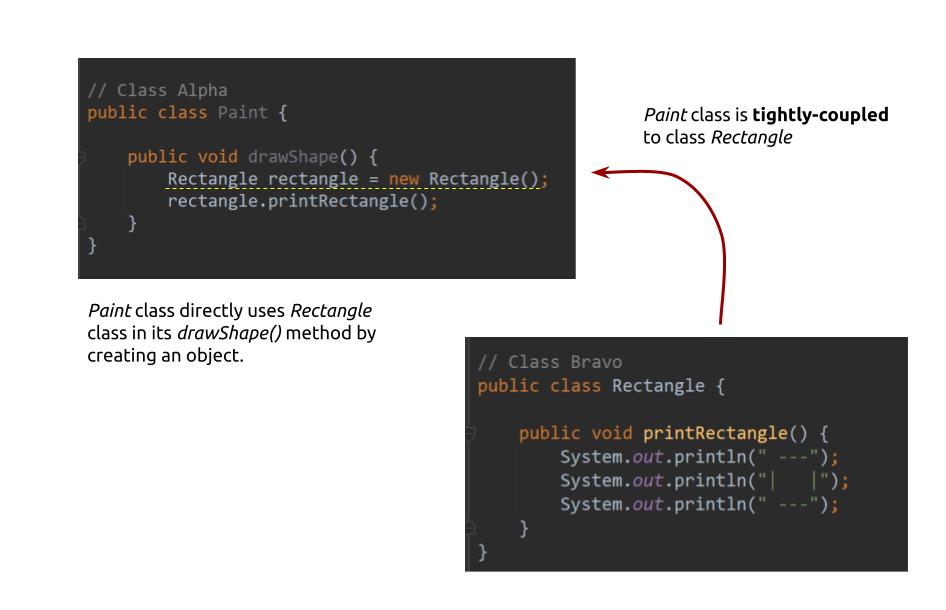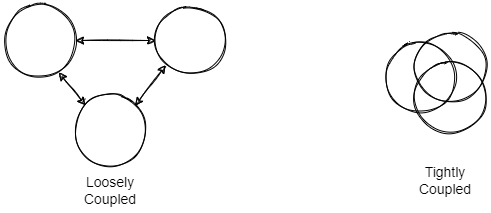Interface
As the application becomes complex and larger scale, it is essential to make it easy to extend and update as time goes by. The interface is an object-oriented programming technique that allows us to build loosely-coupled and extensible applications.

In this code note, we will cover following topics:
- Tightly Coupled Classes
- Intro to Interface
- Dependency Injections
› Tightly Coupled Classes¶
In software engineering, coupling refers to a level of dependencies between two classes.
If class Alpha uses class Bravo by creating a Bravo object, then we can describe their relationships as follows:
- Class Alpha depends on class Bravo.
- Class Alpha is tightly coupled with class Bravo.

In our example above, if we change a code in the class Rectangle, we must accommodate this change in the Paint class. This type of simple code change in one class results in a cascading code change in another dependant class.

This kind of inconvenience is a massive problem in large-scale applications. To mitigate this, we must keep these classes as loosely coupled as possible using Interface.
› Definition of Interface¶
It is a specification that only includes method declarations. It is just a list of methods without the implementations. The interface is also known as a Contract of Behaviors since the listed methods need to be implemented by a Class.
Interface as Variable Type
The type of variable is always stated as its created. There are two styles: the primitive type variables (int, double, char, boolean) and reference-type variables (all objects). We've used an object's class as the type of reference-type variable.
Interface as Method Parameters
The actual benefits of interfaces are reaped when they are used as the type of parameter provided to a method. Since an interface can be used as a variable's type, it can also be used as a parameter type in method calls. For example, the print method in the Printer class of the class below gets a variable of type read.
Interface as Return Type
Interfaces can be used as return types in methods — just like regular variable types. The following example is a class Factory that can be asked to construct different objects that implement the Packable interface.